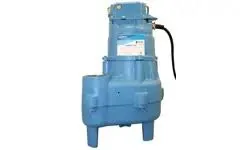Sesotho
- Afrikaans
- Albanian
- Amharic
- Arabic
- Armenian
- Azerbaijani
- Basque
- Belarusian
- Bengali
- Bosnian
- Bulgarian
- Catalan
- Cebuano
- Corsican
- Croatian
- Czech
- Danish
- Dutch
- English
- Esperanto
- Estonian
- Finnish
- French
- Frisian
- Galician
- Georgian
- German
- Greek
- Gujarati
- Haitian Creole
- hausa
- hawaiian
- Hebrew
- Hindi
- Miao
- Hungarian
- Icelandic
- igbo
- Indonesian
- irish
- Italian
- Japanese
- Javanese
- Kannada
- kazakh
- Khmer
- Rwandese
- Korean
- Kurdish
- Kyrgyz
- Lao
- Latin
- Latvian
- Lithuanian
- Luxembourgish
- Macedonian
- Malgashi
- Malay
- Malayalam
- Maltese
- Maori
- Marathi
- Mongolian
- Myanmar
- Nepali
- Norwegian
- Norwegian
- Occitan
- Pashto
- Persian
- Polish
- Portuguese
- Punjabi
- Romanian
- Russian
- Samoan
- Scottish Gaelic
- Serbian
- Sesotho
- Shona
- Sindhi
- Sinhala
- Slovak
- Slovenian
- Somali
- Spanish
- Sundanese
- Swahili
- Swedish
- Tagalog
- Tajik
- Tamil
- Tatar
- Telugu
- Thai
- Turkish
- Turkmen
- Ukrainian
- Urdu
- Uighur
- Uzbek
- Vietnamese
- Welsh
- Bantu
- Yiddish
- Yoruba
- Zulu
Telephone: +86 13120555503
Email: frank@cypump.com
Oct . 13, 2024 02:01 Back to list
slurry pump spares
Understanding Slurry Pump Spares Essential Components for Efficient Operation
Slurry pumps are critical equipment in various industries, including mining, construction, and wastewater management. They are designed to handle abrasive and viscous materials, such as slurries, which are mixtures of solids and liquids. As with any machinery, regular maintenance and the timely replacement of spare parts are essential to ensure optimal performance and longevity of slurry pumps. In this article, we will explore the significance of slurry pump spares and the key components that need attention.
Importance of Slurry Pump Spares
Slurry pump spares play a crucial role in maintaining the efficiency and reliability of the pumping system. Over time, components within the pump can wear out due to abrasion, corrosion, or general wear and tear. This degradation can lead to decreased performance, increased energy consumption, and, ultimately, pump failure. Having a readily available inventory of spare parts ensures that operators can quickly replace worn or damaged components, minimizing downtime and maintaining production continuity.
Additionally, using genuine spare parts is vital. They are specifically designed for the pump model in use, guaranteeing compatibility and reliability. Counterfeit or generic parts may be cheaper, but they often lack the required durability and can lead to more significant issues down the line.
Key Components of Slurry Pump Spares
1. Impellers The impeller is the heart of the slurry pump, responsible for converting mechanical energy into hydraulic energy. Due to their exposure to abrasive materials, impellers are often the first component to wear out. It is crucial to have spare impellers that can withstand the specific conditions of the slurries being pumped.
slurry pump spares

2. Volutes The volute is the casing that surrounds the impeller. It directs the flow of slurry to the discharge pipe. Like impellers, volutes can become eroded due to constant exposure to abrasive materials. Replacing worn volutes promptly is necessary to maintain efficient flow and prevent leaks.
3. Shafts The shaft transmits rotational energy from the motor to the impeller. If a shaft becomes bent or damaged, it can cause vibration and misalignment, leading to more severe mechanical failures. Regular inspection and availability of replacement shafts can prevent these issues.
4. Seals and Glands Seals prevent slurry from leaking out of the pump while protecting the internal components from contamination. Worn or damaged seals can lead to leaks, which not only causes loss of material but can also result in hazardous working conditions. Having spare seals and glands ensures that operators can address these issues quickly.
5. Bearings Bearings support the rotating components of the pump. Over time, they can wear out, leading to increased friction and heat generation. This can further damage the pump if not addressed promptly. Keeping spare bearings on hand is critical for maintaining the operational integrity of the pump.
6. Base Plates and Frames The structural components of the pump, such as base plates and frames, provide support and stability. If these components are damaged or corroded, they can lead to misalignments that affect the pump's operation. Regular inspection and timely replacement of these parts can help prevent larger systemic issues.
Conclusion
In conclusion, slurry pump spares are vital for the efficient operation and longevity of slurry pumps. Understanding the critical components that require regular attention can help companies minimize downtime, reduce maintenance costs, and ensure consistent production levels. Investing in quality spare parts, alongside regular maintenance practices, can significantly enhance the performance and reliability of slurry pumping systems. By prioritizing the availability of genuine spare parts and conducting routine inspections, operators can effectively manage the wear and tear associated with slurry pumps, ultimately leading to improved operational efficiency and profitability.
-
High-Performance Septic Tank Pumps for Reliable Wastewater Management
NewsJul.26,2025
-
High Efficiency Horizontal Split Case Pump for Industrial Use
NewsJul.25,2025
-
Flue Gas Desulfurization Pump for Efficient Chemical Processing
NewsJul.24,2025
-
High-Efficiency Axial Flow Pump for Water Transfer & Irrigation
NewsJul.23,2025
-
High-Efficiency Horizontal Split Case Pump for Industrial Use
NewsJul.22,2025
-
Reliable Septic Tank Pumps | Durable & Clog-Resistant
NewsJul.22,2025










